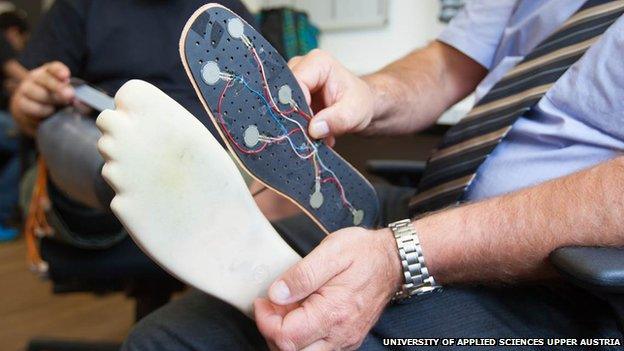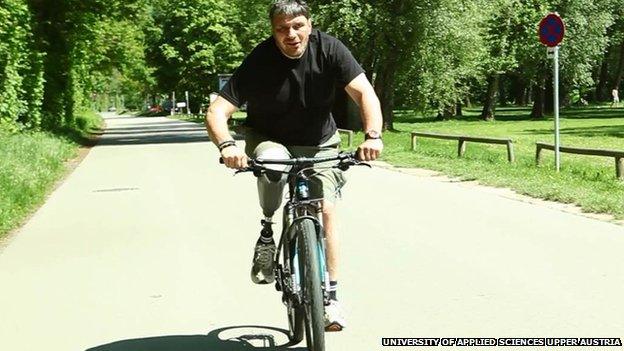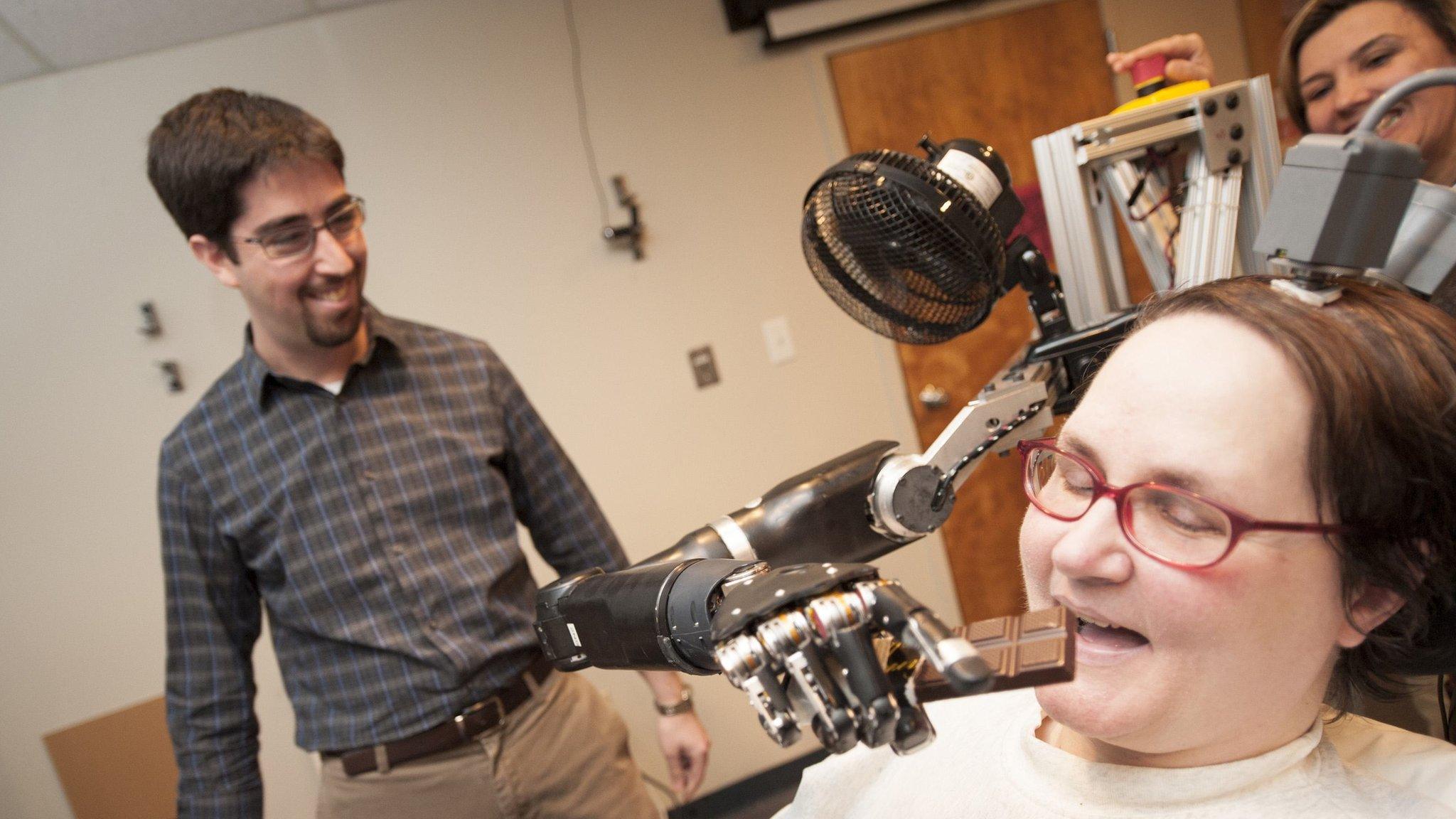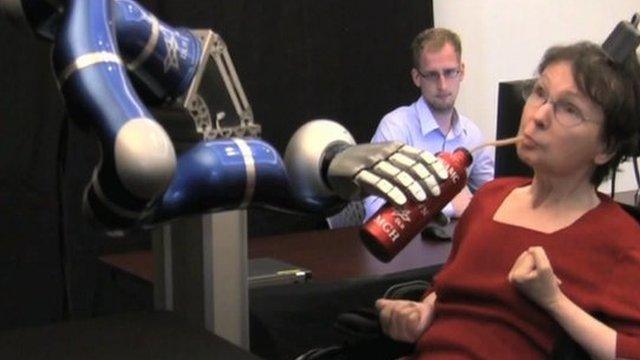Artificial leg allows patient to feel
- Published
- comments
Wolfang Rangger: "When I step on a stone I feel it, which has not been the case before"
Scientists in Austria have created an artificial leg which allows the amputee to feel lifelike sensations from their foot.
The recipient, Wolfang Rangger, who lost his right leg in 2007, said: "It feels like I have a foot again. It's like a second lease of life."
Prof Hubert Egger of the University of Linz, said sensors fitted to the sole of the artificial foot, stimulated nerves at the base of the stump.
He added it was the first time that a leg amputee had been fitted with a sensory-enhanced prosthesis.
How it works
Surgeons first rewired nerve endings in the patient's stump to place them close to the skin surface.
Six sensors were fitted to the base of the foot, to measure the pressure of heel, toe and foot movement.

Sensors were fitted to the sole of the prosthetic
These signals were relayed to a micro-controller which relayed them to stimulators inside the shaft where it touched the base of the stump.
These vibrated, stimulating the nerve endings under the skin, which relayed the signals to the brain.
Prof Egger said: "The sensors tell the brain there is a foot and the wearer has the impression that it rolls off the ground when he walks."
Wolfgang Ranger, a former teacher, who lost his leg after a blood clot caused by a stroke, has been testing the device for six months, both in the lab and at home.
Phantom limb pain

Mr Rangger has tested the prosthetic in a range of activities

He says it has given him a new lease of life
He said: "I no longer slip on ice and I can tell whether I walk on gravel, concrete, grass or sand. I can even feel small stones."
The 54-year-old also runs, cycles and goes climbing.
Another major benefit was a reduction in excruciating "phantom limb" pain felt by Mr Rangger for years following the amputation.
Prof Egger said the brain now received real data rather than searching for information from the missing limb.
The Austrian research team unveiled their results at a press conference in Vienna.
But they have yet to publish details in a medical journal.
Last year an international team created a bionic hand which allows the amputee to feel sensations from their fingers.
Their study was published in the journal Science Translational Medicine., external
Dr Alastair Ritchie, lecturer in Biomaterials and Bioengineering, University of Nottingham, said the Austrian announcement was exciting but not as groundbreaking as the work already done for the arm and hand.
- Published5 February 2014
- Published17 December 2012

- Published16 May 2012
